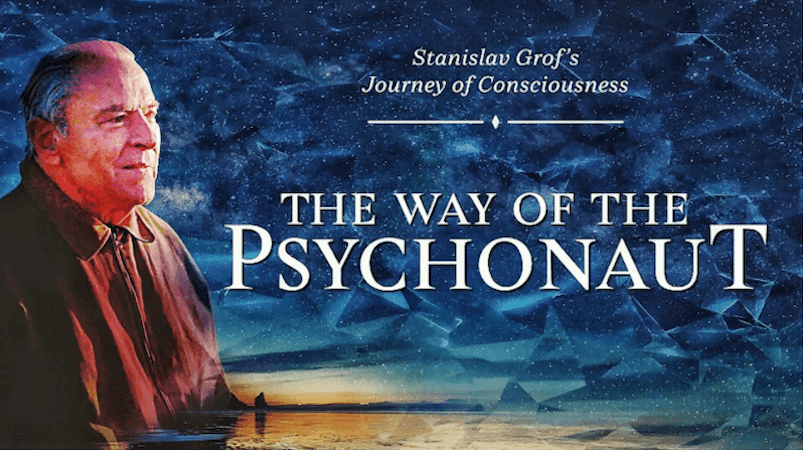
"Essentially Stan's time at Esalen introduced the theories and practices that found their way across the country to where it was so that I had the possibility of these experiences — thanks to him. I finally met him in 2014 and I worked on the documentary for a good solid four-and-a-half years."
― Susan Hess Logeais
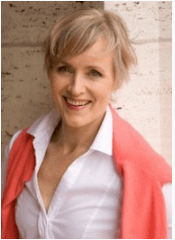
Susan Hess Logeais’s thought-provoking new documentary The Way of the Psychonaut explores the life and work of longtime Esalen scholar-in-residence Stanislav Grof. A Czech-born psychiatrist and psychedelic psychotherapy pioneer, Stan’s quest for knowledge into the healing power of non-ordinary states of consciousness influenced the discipline of psychology and profoundly changed the lives of many individuals.
Susan’s revealing documentary springboards from her personal existential crisis into Stan’s lasting impact and she has populated The Way of the Psychonaut website with a vast collection of resources, including opportunities to stream the film, video interviews from the documentary and much more.
“There were so many things I wanted to learn from Stan,” Susan says. “I wanted to study mythology, I loved quantum physics, Eastern religions and philosophies, and Stan held all of it. My thought was if I tell his story, I'll get to share what I've learned up to this point and I'll get to learn so much more. It just seemed like the best thing I could do and that Stan’s story could be a wonderful vehicle for people who were on the fence, who couldn't quite accept spiritual concepts because Stan was also such a scientist.”
To be sure, Stan’s breadth of work offered Susan a stellar invitation to explore remarkable territory. Stan has been a psychiatrist with more than 60 years of experience in research of non-ordinary states of consciousness. He was one of the founders and chief theoreticians of transpersonal psychology and in 1969, he became Assistant Professor of Psychiatry at Johns Hopkins University, continuing his research as Chief of Psychiatric Research at the Maryland Psychiatric Research Center.
In 1973, Stan was invited as Scholar-in-Residence to Esalen, where, with his late wife Christina Grof, he developed Holotropic Breathwork, an innovative form of experiential psychotherapy that is now being used worldwide.
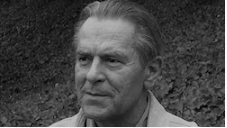
To create the documentary, Susan began with a series of interviews with Stan that revealed his journey from material scientist to a spiritually aware explorer of the deep psyche. The film interweaves these interviews with re-enactments with Stan’s most compelling therapeutic sessions. The illuminating result showcases the development of Stan’s theories and offers a powerful glimpse of what is possible for all of us.
“Essentially Stan's time at Esalen introduced the theories and practices that found their way across the country to where I was so that I had the possibility of these experiences—thanks to him,” Susan shares. “I finally met him in 2014 and I worked on the documentary for a good solid four-and-a-half years.”
Susan interviewed an intrepid array of change agents in the film as well, including: Stan’s brother, Paul Grof; Esalen Co-founder Michael Murphy; Esalen faculty Fritjof Capra; Rick Doblin—also the founder of Multidisciplinary Association for Psychedelic Studies (MAPS); biologist Rupert Sheldrake; anthropologist Michael Harner; and many others.
“Stan represented not only another doorway into psychedelics but also sobriety,” Michael Murphy explains in the documentary. “He actually thought about it. He didn't just proclaim it like Timothy Leary. Tim pretended to think about it, but he just proclaimed the vision of partaking in LSD every Sunday—if it's good, just to have more of it. We saw disaster after disaster during the '60s before Stan ever came to Esalen. Taking it promiscuously just didn't work. There was something truly unique about Stan's combination of research and the sheer beauty of his personality.”
Susan was also eager to honor revered anthropologist Michael Harner in the film.
“Michael opened me to dimensions of spirit and through his techniques, I was able to connect to many people who really changed my life and put me where I am now,” she says. “To have Michael and Stan in conversation together and then [psychologist] Ralph Metzner and Stan in conversation together—Michael and Ralph passed away since the documentary was made—created such an amazing opportunity.”
In terms of knowledge, Susan says Fritjof also offered a deeper understanding about integrating the wisdom that can be gained through psychedelics. Still, the subject of psychedelics does not come without misconceptions, particularly the idea that “going on a trip” is just fun.
“I will read Facebook posts about how a person took a super high dose and all this strange stuff happened,” Susan shares. “I'm not always on board when people use psychedelics as a distraction or for amusement because I believe these are tools—especially when they're plant medicines where it's honoring the plant, the spirit of the plant—that assist with this work. And it's deep work.
“For me, there should be the intention of drawing something from it,” she adds. “What did I learn from it? How did it enhance my understanding? How did it grow my ability to feel energy? In this way, you're integrating the experience and it wasn't just for the sake of, ‘What did I see? How weird was it?’”
And for individuals who are curious and want to partake in the experience and “do the work?”
First and foremost, Susan reveals that even the film points out that finding a "sitter" is key.
“Stan is very, very clear about this—that if there's any underlying mental illness, it can be triggered in the course of exploration with psychedelics,” she says. “There may be experiences that uncover deep issues in an individual's spiritual journey or trajectory. You want to make sure there's somebody there to hold your hand figuratively, or maybe, literally; somebody who's there to, as Stan says, ‘hold the kite strings.’ You don't want to do it by yourself.
“We really do need the support of someone who has knowledge. If I hadn't had sitters to be there with me and support me in the process, it might not have come out as well. I might not have fully integrated the information I received and it might have left me depressed. You do have to be careful.”
When asked if she could sum up Stan in a word or two, Susan says: “Vast and profound.”
Watch the trailer and learn more about The Way of the Psychonaut here.
Experience Michael Murphy's interview here.
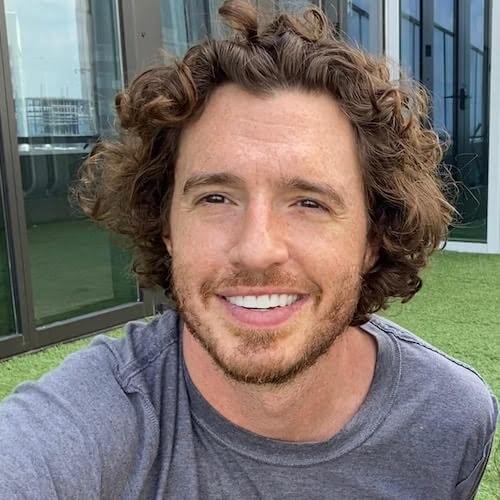
“Remembering to be as self compassionate as I can and praying to the divine that we're all a part of.”
–Aaron
“Prayer, reading, meditation, walking.”
–Karen
“Erratically — which is an ongoing stream of practice to find peace.”
–Charles
“Try on a daily basis to be kind to myself and to realize that making mistakes is a part of the human condition. Learning from our mistakes is a journey. But it starts with compassion and caring. First for oneself.”
–Steve
“Physically: aerobic exercise, volleyball, ice hockey, cycling, sailing. Emotionally: unfortunately I have to work to ‘not care’ about people or situations which may end painfully. Along the lines of ‘attachment is the source of suffering’, so best to avoid it or limit its scope. Sad though because it could also be the source of great joy. Is it worth the risk?“
–Rainer
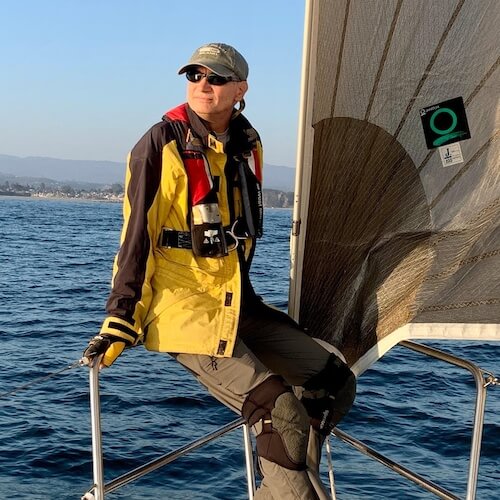

“It's time for my heart to be nurtured on one level yet contained on another. To go easy on me and to allow my feelings to be validated, not judged harshly. On the other hand, to let the heart rule with equanimity and not lead the mind and body around like a master.”
–Suzanne
“I spend time thinking of everything I am grateful for, and I try to develop my ability to express compassion for myself and others without reservation. I take time to do the things I need to do to keep myself healthy and happy. This includes taking experiential workshops, fostering relationships, and participating within groups which have a similar interest to become a more compassionate and fulfilled being.“
–Peter
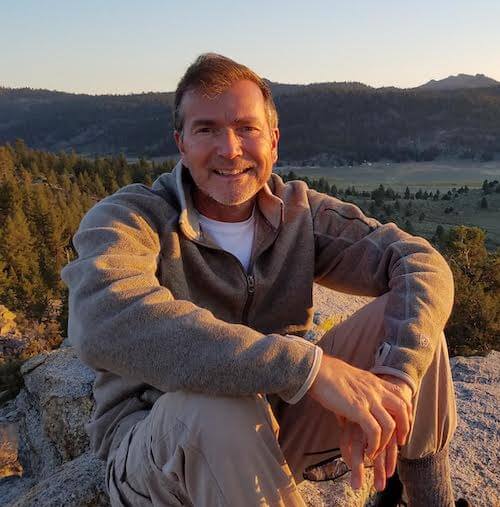
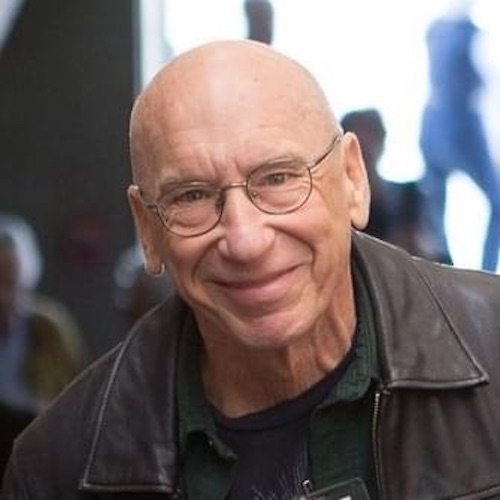
“Self-forgiveness for my own judgments. And oh yeah, coming to Esalen.”
–David B.
“Hmm, this is a tough one! I guess I take care of my heart through fostering relationships with people I feel connected to. Spending quality time with them (whether we're on the phone, through messages/letters, on Zoom, or in-person). Being there for them, listening to them, sharing what's going on with me, my struggles and my successes... like we do in the Esalen weekly Friends of Esalen Zoom sessions!”
–Lori

“I remind myself in many ways of the fact that " Love is all there is!" LOVE is the prize and this one precious life is the stage we get to learn our lessons. I get out into nature, hike, camp, river kayak, fly fish, garden, I create, I dance (not enough!), and I remain grateful for each day, each breath, each moment. Being in the moment, awake, and remembering the gift of life and my feeling of gratitude for all of creation.”
–Steven
“My physical heart by limiting stress and eating a heart-healthy diet. My emotional heart by staying in love with the world and by knowing that all disappointment and loss will pass.“
–David Z.
Today, September 29, is World Heart Day. Strike up a conversation with your own heart and as you feel comfortable, encourage others to do the same. As part of our own transformations and self-care, we sometimes ask for others to illuminate and enliven our hearts or speak our love language.
What if we could do this for ourselves too, even if just for today… or to start a heart practice, forever?

"Essentially Stan's time at Esalen introduced the theories and practices that found their way across the country to where it was so that I had the possibility of these experiences — thanks to him. I finally met him in 2014 and I worked on the documentary for a good solid four-and-a-half years."
― Susan Hess Logeais

Susan Hess Logeais’s thought-provoking new documentary The Way of the Psychonaut explores the life and work of longtime Esalen scholar-in-residence Stanislav Grof. A Czech-born psychiatrist and psychedelic psychotherapy pioneer, Stan’s quest for knowledge into the healing power of non-ordinary states of consciousness influenced the discipline of psychology and profoundly changed the lives of many individuals.
Susan’s revealing documentary springboards from her personal existential crisis into Stan’s lasting impact and she has populated The Way of the Psychonaut website with a vast collection of resources, including opportunities to stream the film, video interviews from the documentary and much more.
“There were so many things I wanted to learn from Stan,” Susan says. “I wanted to study mythology, I loved quantum physics, Eastern religions and philosophies, and Stan held all of it. My thought was if I tell his story, I'll get to share what I've learned up to this point and I'll get to learn so much more. It just seemed like the best thing I could do and that Stan’s story could be a wonderful vehicle for people who were on the fence, who couldn't quite accept spiritual concepts because Stan was also such a scientist.”
To be sure, Stan’s breadth of work offered Susan a stellar invitation to explore remarkable territory. Stan has been a psychiatrist with more than 60 years of experience in research of non-ordinary states of consciousness. He was one of the founders and chief theoreticians of transpersonal psychology and in 1969, he became Assistant Professor of Psychiatry at Johns Hopkins University, continuing his research as Chief of Psychiatric Research at the Maryland Psychiatric Research Center.
In 1973, Stan was invited as Scholar-in-Residence to Esalen, where, with his late wife Christina Grof, he developed Holotropic Breathwork, an innovative form of experiential psychotherapy that is now being used worldwide.

To create the documentary, Susan began with a series of interviews with Stan that revealed his journey from material scientist to a spiritually aware explorer of the deep psyche. The film interweaves these interviews with re-enactments with Stan’s most compelling therapeutic sessions. The illuminating result showcases the development of Stan’s theories and offers a powerful glimpse of what is possible for all of us.
“Essentially Stan's time at Esalen introduced the theories and practices that found their way across the country to where I was so that I had the possibility of these experiences—thanks to him,” Susan shares. “I finally met him in 2014 and I worked on the documentary for a good solid four-and-a-half years.”
Susan interviewed an intrepid array of change agents in the film as well, including: Stan’s brother, Paul Grof; Esalen Co-founder Michael Murphy; Esalen faculty Fritjof Capra; Rick Doblin—also the founder of Multidisciplinary Association for Psychedelic Studies (MAPS); biologist Rupert Sheldrake; anthropologist Michael Harner; and many others.
“Stan represented not only another doorway into psychedelics but also sobriety,” Michael Murphy explains in the documentary. “He actually thought about it. He didn't just proclaim it like Timothy Leary. Tim pretended to think about it, but he just proclaimed the vision of partaking in LSD every Sunday—if it's good, just to have more of it. We saw disaster after disaster during the '60s before Stan ever came to Esalen. Taking it promiscuously just didn't work. There was something truly unique about Stan's combination of research and the sheer beauty of his personality.”
Susan was also eager to honor revered anthropologist Michael Harner in the film.
“Michael opened me to dimensions of spirit and through his techniques, I was able to connect to many people who really changed my life and put me where I am now,” she says. “To have Michael and Stan in conversation together and then [psychologist] Ralph Metzner and Stan in conversation together—Michael and Ralph passed away since the documentary was made—created such an amazing opportunity.”
In terms of knowledge, Susan says Fritjof also offered a deeper understanding about integrating the wisdom that can be gained through psychedelics. Still, the subject of psychedelics does not come without misconceptions, particularly the idea that “going on a trip” is just fun.
“I will read Facebook posts about how a person took a super high dose and all this strange stuff happened,” Susan shares. “I'm not always on board when people use psychedelics as a distraction or for amusement because I believe these are tools—especially when they're plant medicines where it's honoring the plant, the spirit of the plant—that assist with this work. And it's deep work.
“For me, there should be the intention of drawing something from it,” she adds. “What did I learn from it? How did it enhance my understanding? How did it grow my ability to feel energy? In this way, you're integrating the experience and it wasn't just for the sake of, ‘What did I see? How weird was it?’”
And for individuals who are curious and want to partake in the experience and “do the work?”
First and foremost, Susan reveals that even the film points out that finding a "sitter" is key.
“Stan is very, very clear about this—that if there's any underlying mental illness, it can be triggered in the course of exploration with psychedelics,” she says. “There may be experiences that uncover deep issues in an individual's spiritual journey or trajectory. You want to make sure there's somebody there to hold your hand figuratively, or maybe, literally; somebody who's there to, as Stan says, ‘hold the kite strings.’ You don't want to do it by yourself.
“We really do need the support of someone who has knowledge. If I hadn't had sitters to be there with me and support me in the process, it might not have come out as well. I might not have fully integrated the information I received and it might have left me depressed. You do have to be careful.”
When asked if she could sum up Stan in a word or two, Susan says: “Vast and profound.”
Watch the trailer and learn more about The Way of the Psychonaut here.
Experience Michael Murphy's interview here.

“Remembering to be as self compassionate as I can and praying to the divine that we're all a part of.”
–Aaron
“Prayer, reading, meditation, walking.”
–Karen
“Erratically — which is an ongoing stream of practice to find peace.”
–Charles
“Try on a daily basis to be kind to myself and to realize that making mistakes is a part of the human condition. Learning from our mistakes is a journey. But it starts with compassion and caring. First for oneself.”
–Steve
“Physically: aerobic exercise, volleyball, ice hockey, cycling, sailing. Emotionally: unfortunately I have to work to ‘not care’ about people or situations which may end painfully. Along the lines of ‘attachment is the source of suffering’, so best to avoid it or limit its scope. Sad though because it could also be the source of great joy. Is it worth the risk?“
–Rainer


“It's time for my heart to be nurtured on one level yet contained on another. To go easy on me and to allow my feelings to be validated, not judged harshly. On the other hand, to let the heart rule with equanimity and not lead the mind and body around like a master.”
–Suzanne
“I spend time thinking of everything I am grateful for, and I try to develop my ability to express compassion for myself and others without reservation. I take time to do the things I need to do to keep myself healthy and happy. This includes taking experiential workshops, fostering relationships, and participating within groups which have a similar interest to become a more compassionate and fulfilled being.“
–Peter


“Self-forgiveness for my own judgments. And oh yeah, coming to Esalen.”
–David B.
“Hmm, this is a tough one! I guess I take care of my heart through fostering relationships with people I feel connected to. Spending quality time with them (whether we're on the phone, through messages/letters, on Zoom, or in-person). Being there for them, listening to them, sharing what's going on with me, my struggles and my successes... like we do in the Esalen weekly Friends of Esalen Zoom sessions!”
–Lori

“I remind myself in many ways of the fact that " Love is all there is!" LOVE is the prize and this one precious life is the stage we get to learn our lessons. I get out into nature, hike, camp, river kayak, fly fish, garden, I create, I dance (not enough!), and I remain grateful for each day, each breath, each moment. Being in the moment, awake, and remembering the gift of life and my feeling of gratitude for all of creation.”
–Steven
“My physical heart by limiting stress and eating a heart-healthy diet. My emotional heart by staying in love with the world and by knowing that all disappointment and loss will pass.“
–David Z.
Today, September 29, is World Heart Day. Strike up a conversation with your own heart and as you feel comfortable, encourage others to do the same. As part of our own transformations and self-care, we sometimes ask for others to illuminate and enliven our hearts or speak our love language.
What if we could do this for ourselves too, even if just for today… or to start a heart practice, forever?

"Essentially Stan's time at Esalen introduced the theories and practices that found their way across the country to where it was so that I had the possibility of these experiences — thanks to him. I finally met him in 2014 and I worked on the documentary for a good solid four-and-a-half years."
― Susan Hess Logeais

Susan Hess Logeais’s thought-provoking new documentary The Way of the Psychonaut explores the life and work of longtime Esalen scholar-in-residence Stanislav Grof. A Czech-born psychiatrist and psychedelic psychotherapy pioneer, Stan’s quest for knowledge into the healing power of non-ordinary states of consciousness influenced the discipline of psychology and profoundly changed the lives of many individuals.
Susan’s revealing documentary springboards from her personal existential crisis into Stan’s lasting impact and she has populated The Way of the Psychonaut website with a vast collection of resources, including opportunities to stream the film, video interviews from the documentary and much more.
“There were so many things I wanted to learn from Stan,” Susan says. “I wanted to study mythology, I loved quantum physics, Eastern religions and philosophies, and Stan held all of it. My thought was if I tell his story, I'll get to share what I've learned up to this point and I'll get to learn so much more. It just seemed like the best thing I could do and that Stan’s story could be a wonderful vehicle for people who were on the fence, who couldn't quite accept spiritual concepts because Stan was also such a scientist.”
To be sure, Stan’s breadth of work offered Susan a stellar invitation to explore remarkable territory. Stan has been a psychiatrist with more than 60 years of experience in research of non-ordinary states of consciousness. He was one of the founders and chief theoreticians of transpersonal psychology and in 1969, he became Assistant Professor of Psychiatry at Johns Hopkins University, continuing his research as Chief of Psychiatric Research at the Maryland Psychiatric Research Center.
In 1973, Stan was invited as Scholar-in-Residence to Esalen, where, with his late wife Christina Grof, he developed Holotropic Breathwork, an innovative form of experiential psychotherapy that is now being used worldwide.

To create the documentary, Susan began with a series of interviews with Stan that revealed his journey from material scientist to a spiritually aware explorer of the deep psyche. The film interweaves these interviews with re-enactments with Stan’s most compelling therapeutic sessions. The illuminating result showcases the development of Stan’s theories and offers a powerful glimpse of what is possible for all of us.
“Essentially Stan's time at Esalen introduced the theories and practices that found their way across the country to where I was so that I had the possibility of these experiences—thanks to him,” Susan shares. “I finally met him in 2014 and I worked on the documentary for a good solid four-and-a-half years.”
Susan interviewed an intrepid array of change agents in the film as well, including: Stan’s brother, Paul Grof; Esalen Co-founder Michael Murphy; Esalen faculty Fritjof Capra; Rick Doblin—also the founder of Multidisciplinary Association for Psychedelic Studies (MAPS); biologist Rupert Sheldrake; anthropologist Michael Harner; and many others.
“Stan represented not only another doorway into psychedelics but also sobriety,” Michael Murphy explains in the documentary. “He actually thought about it. He didn't just proclaim it like Timothy Leary. Tim pretended to think about it, but he just proclaimed the vision of partaking in LSD every Sunday—if it's good, just to have more of it. We saw disaster after disaster during the '60s before Stan ever came to Esalen. Taking it promiscuously just didn't work. There was something truly unique about Stan's combination of research and the sheer beauty of his personality.”
Susan was also eager to honor revered anthropologist Michael Harner in the film.
“Michael opened me to dimensions of spirit and through his techniques, I was able to connect to many people who really changed my life and put me where I am now,” she says. “To have Michael and Stan in conversation together and then [psychologist] Ralph Metzner and Stan in conversation together—Michael and Ralph passed away since the documentary was made—created such an amazing opportunity.”
In terms of knowledge, Susan says Fritjof also offered a deeper understanding about integrating the wisdom that can be gained through psychedelics. Still, the subject of psychedelics does not come without misconceptions, particularly the idea that “going on a trip” is just fun.
“I will read Facebook posts about how a person took a super high dose and all this strange stuff happened,” Susan shares. “I'm not always on board when people use psychedelics as a distraction or for amusement because I believe these are tools—especially when they're plant medicines where it's honoring the plant, the spirit of the plant—that assist with this work. And it's deep work.
“For me, there should be the intention of drawing something from it,” she adds. “What did I learn from it? How did it enhance my understanding? How did it grow my ability to feel energy? In this way, you're integrating the experience and it wasn't just for the sake of, ‘What did I see? How weird was it?’”
And for individuals who are curious and want to partake in the experience and “do the work?”
First and foremost, Susan reveals that even the film points out that finding a "sitter" is key.
“Stan is very, very clear about this—that if there's any underlying mental illness, it can be triggered in the course of exploration with psychedelics,” she says. “There may be experiences that uncover deep issues in an individual's spiritual journey or trajectory. You want to make sure there's somebody there to hold your hand figuratively, or maybe, literally; somebody who's there to, as Stan says, ‘hold the kite strings.’ You don't want to do it by yourself.
“We really do need the support of someone who has knowledge. If I hadn't had sitters to be there with me and support me in the process, it might not have come out as well. I might not have fully integrated the information I received and it might have left me depressed. You do have to be careful.”
When asked if she could sum up Stan in a word or two, Susan says: “Vast and profound.”
Watch the trailer and learn more about The Way of the Psychonaut here.
Experience Michael Murphy's interview here.

“Remembering to be as self compassionate as I can and praying to the divine that we're all a part of.”
–Aaron
“Prayer, reading, meditation, walking.”
–Karen
“Erratically — which is an ongoing stream of practice to find peace.”
–Charles
“Try on a daily basis to be kind to myself and to realize that making mistakes is a part of the human condition. Learning from our mistakes is a journey. But it starts with compassion and caring. First for oneself.”
–Steve
“Physically: aerobic exercise, volleyball, ice hockey, cycling, sailing. Emotionally: unfortunately I have to work to ‘not care’ about people or situations which may end painfully. Along the lines of ‘attachment is the source of suffering’, so best to avoid it or limit its scope. Sad though because it could also be the source of great joy. Is it worth the risk?“
–Rainer


“It's time for my heart to be nurtured on one level yet contained on another. To go easy on me and to allow my feelings to be validated, not judged harshly. On the other hand, to let the heart rule with equanimity and not lead the mind and body around like a master.”
–Suzanne
“I spend time thinking of everything I am grateful for, and I try to develop my ability to express compassion for myself and others without reservation. I take time to do the things I need to do to keep myself healthy and happy. This includes taking experiential workshops, fostering relationships, and participating within groups which have a similar interest to become a more compassionate and fulfilled being.“
–Peter


“Self-forgiveness for my own judgments. And oh yeah, coming to Esalen.”
–David B.
“Hmm, this is a tough one! I guess I take care of my heart through fostering relationships with people I feel connected to. Spending quality time with them (whether we're on the phone, through messages/letters, on Zoom, or in-person). Being there for them, listening to them, sharing what's going on with me, my struggles and my successes... like we do in the Esalen weekly Friends of Esalen Zoom sessions!”
–Lori

“I remind myself in many ways of the fact that " Love is all there is!" LOVE is the prize and this one precious life is the stage we get to learn our lessons. I get out into nature, hike, camp, river kayak, fly fish, garden, I create, I dance (not enough!), and I remain grateful for each day, each breath, each moment. Being in the moment, awake, and remembering the gift of life and my feeling of gratitude for all of creation.”
–Steven
“My physical heart by limiting stress and eating a heart-healthy diet. My emotional heart by staying in love with the world and by knowing that all disappointment and loss will pass.“
–David Z.
Today, September 29, is World Heart Day. Strike up a conversation with your own heart and as you feel comfortable, encourage others to do the same. As part of our own transformations and self-care, we sometimes ask for others to illuminate and enliven our hearts or speak our love language.
What if we could do this for ourselves too, even if just for today… or to start a heart practice, forever?